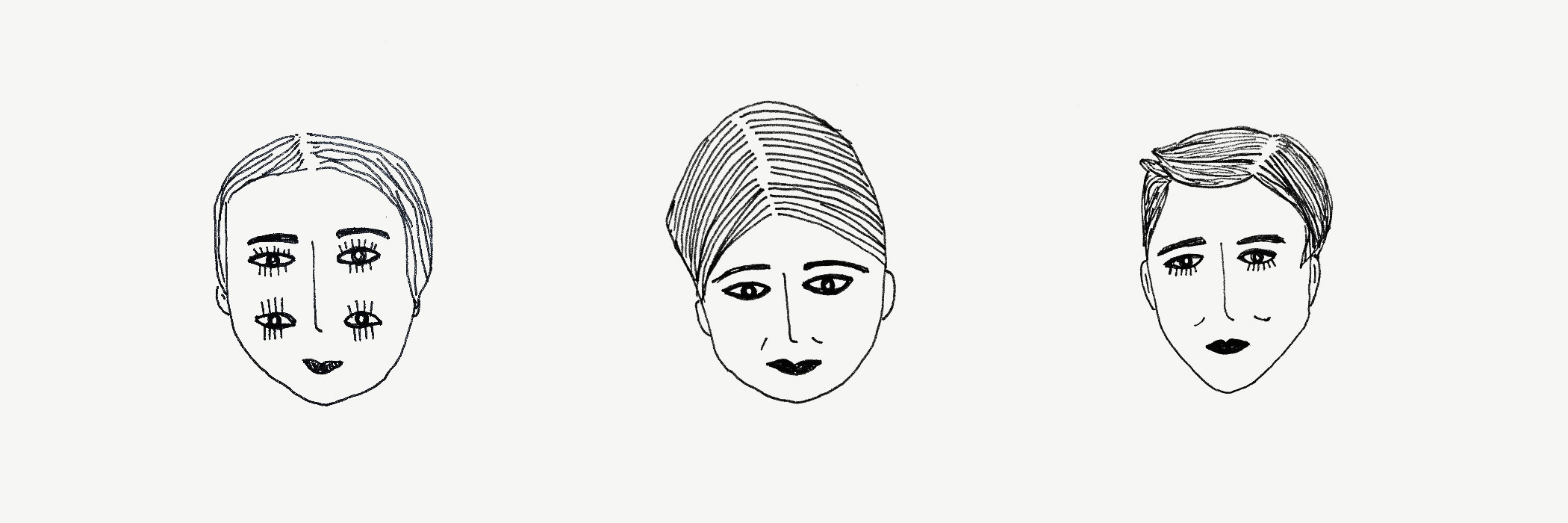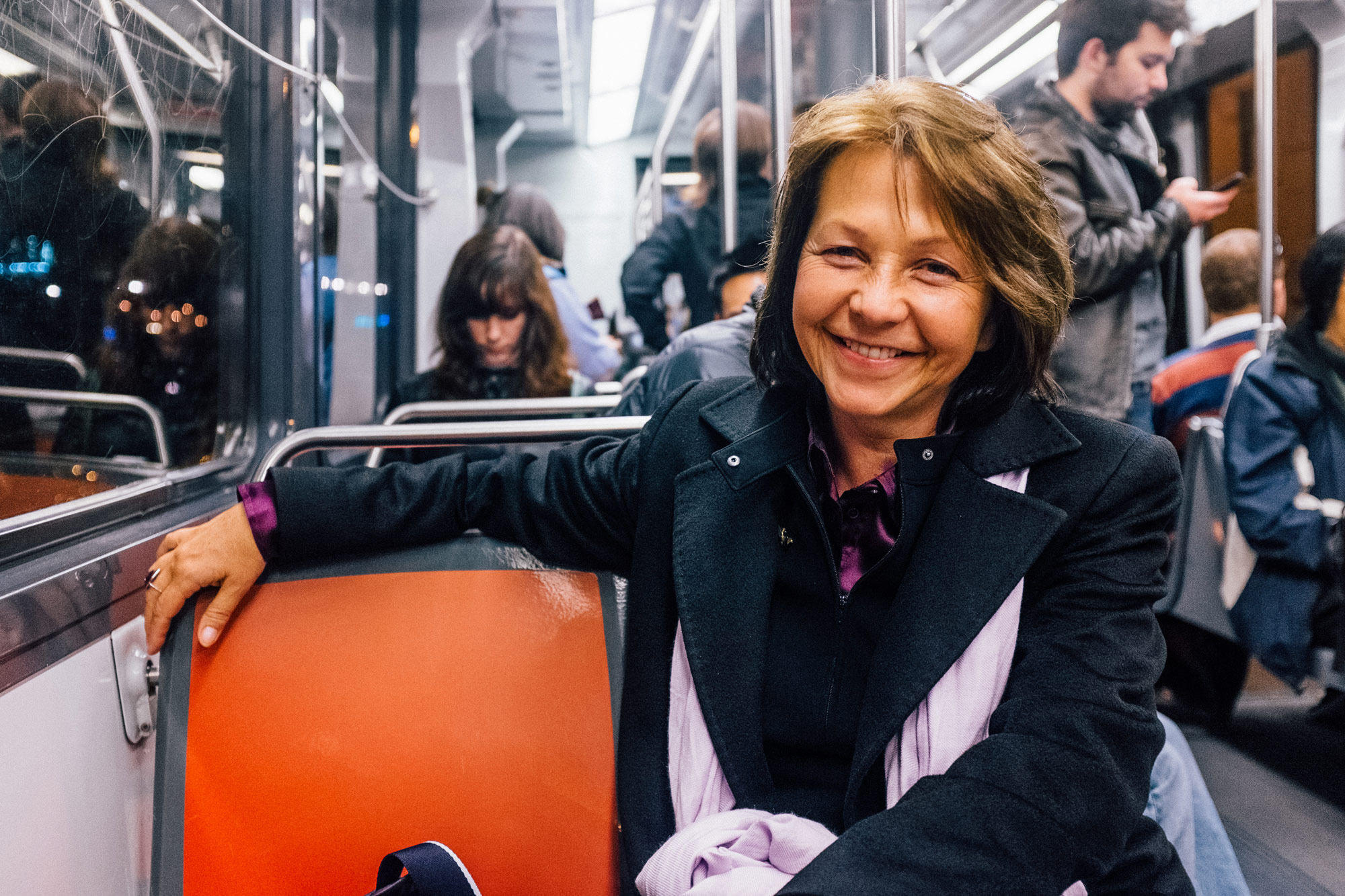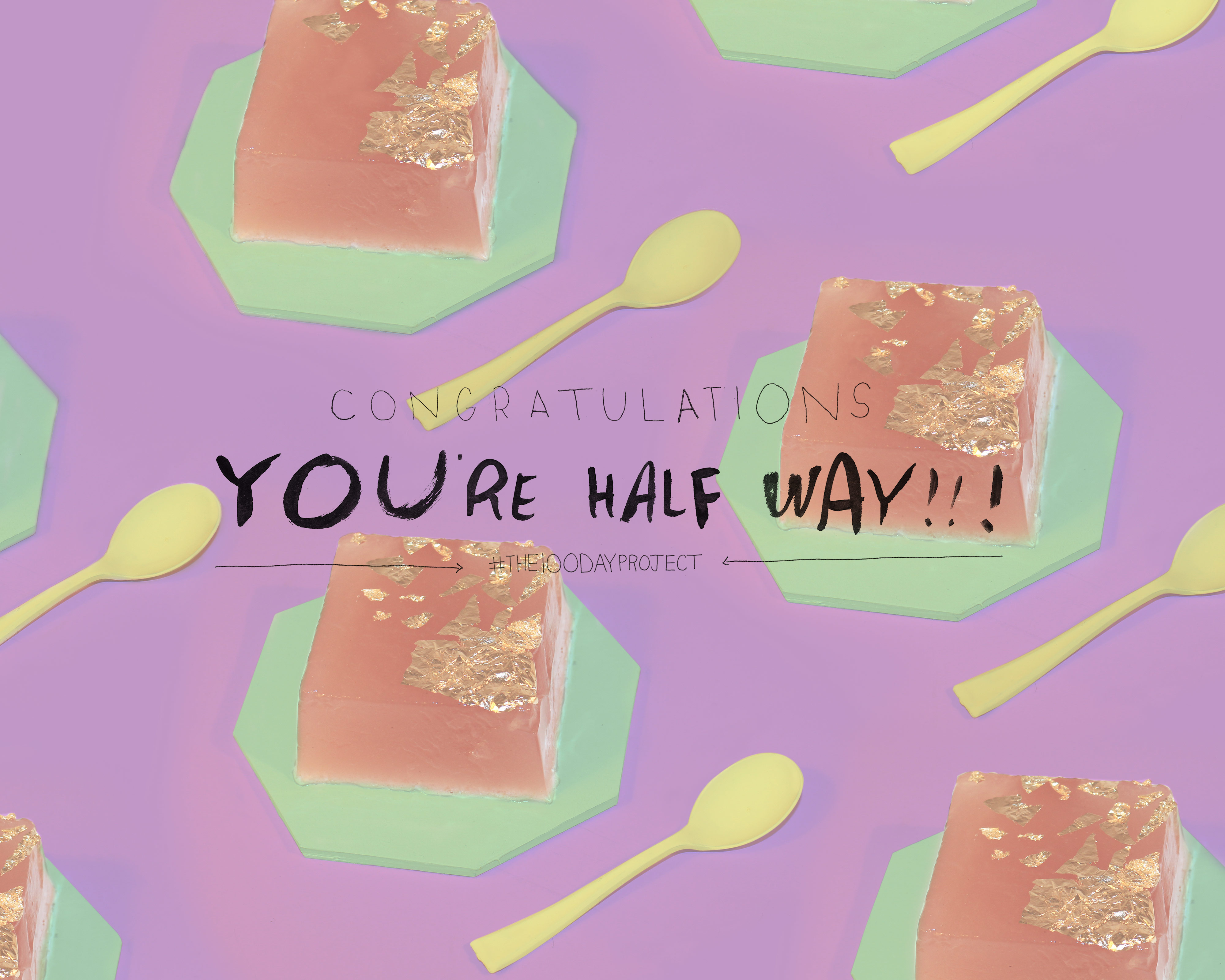
- Interviews by Tammi Heneveld June 2, 2015
- Lettering by Elle Luna
Image by Jessica Mentis
100–Day Project: Midway Celebration
In celebration of the halfway point of the 100-Day Project with Elle Luna, this short feature highlights the experiences of six project participants, who open up about why they decided to join, the inspiration behind their projects, and what they’ve learned about the creative process so far. Need a creative kickstart? Read on and ask what you could do with 100 days of making—it’s never too late to start.
- feature
Enrique Barrios #100DaysOfFacesFromElPaso
What made you decide to sign up for the 100-Day Project? I am constantly looking for time to do more art and illustration projects. My nine-to-five is in design, and even though I love what I do, I wanted to do something that I could be in full control of, from start to finish, and feel vulnerable doing.
Drawing has always been my favorite form of communication. I used to get in trouble at school for drawing on my test papers instead of answering questions, and I missed that young, deviant spirit. The wonderful Elle Luna and my lovely wife, Annessa, both inspired me to do the 100-Day Project, and I’ve found a part of my inner misfit again.
What inspired your project? I was born in Juárez, Mexico, and raised in El Paso, Texas. My upbringing on the border was a dry and desolate life surrounded by amazing Mexican food, mission style shopping malls, and incredibly kind-hearted individuals. El Pasoans are a genuine, welcoming, and diverse group of people surrounded by a lot of history: old vaqueros, Tigua Indians, Cholos, Chicanos, troubadours, and people from all different walks of life make up the DNA of this desert town. I wanted to capture these people, their faces, and their stories. Unfortunately, the best source for these faces was the El Paso DWI Arrests site. The people are real, but their names are changed. Their stories are from my imagination, pulled from personal stories and childhood memories, with subtle hints of reality. Matchbooks felt like the perfect format: they have their own unique textures, colors, artwork, and history, which is appropriate for the portraits.
What have you learned about your creative process since starting this project? Within a matter of days, I came to realize how important it is for my own sanity and general health to take time from my day to create. Drawing these portraits has become my own little mental yoga; it’s my time to just make while I tune out unimportant things like work-related stress, bills, or whatever. Most importantly, I feel happier.
The community of artists and makers that has been created through this project reminds me of my art school days. It’s encouraging, motivating, and full of talent.
Is there anything else you want to say about your experience with the 100-Day Project thus far? Thanks for moderating and facilitating this project, and for planting so many seeds of creativity. I’m addicted.
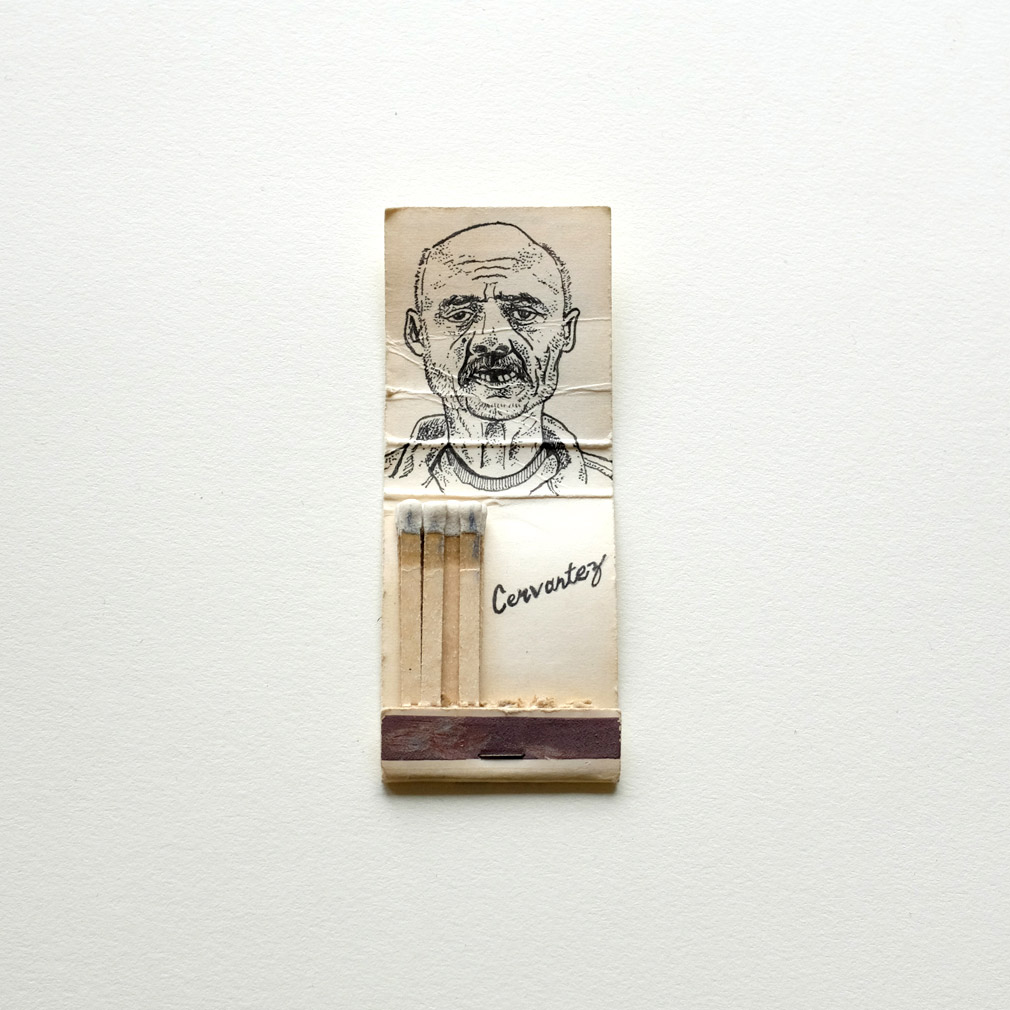
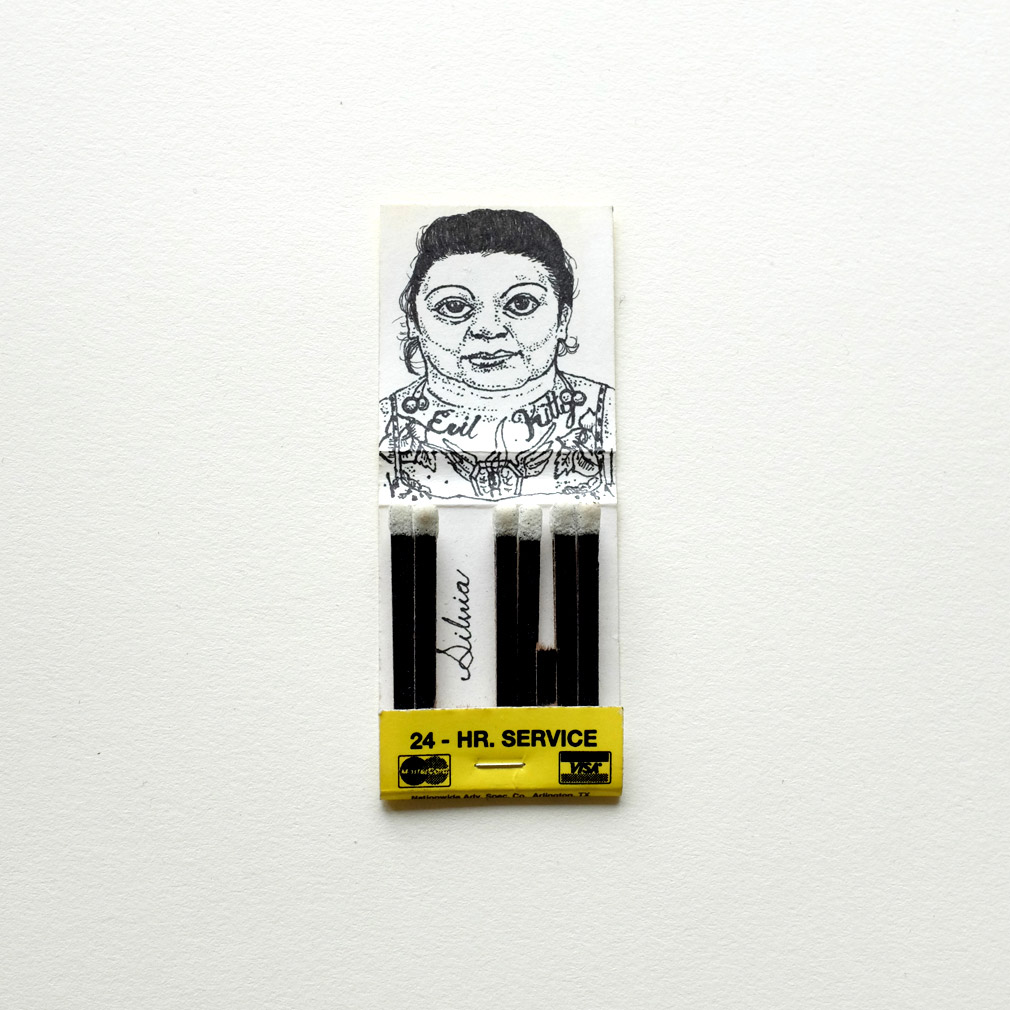
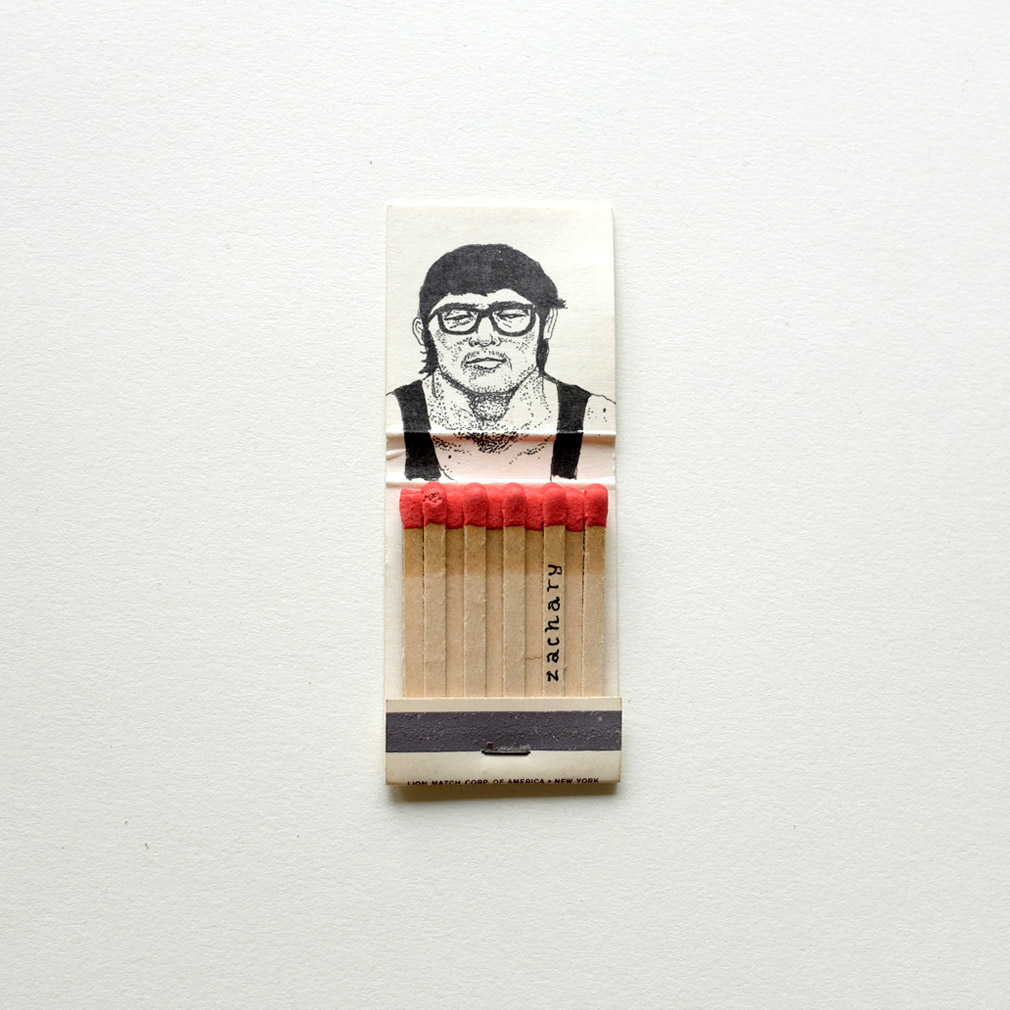
“Drawing these portraits has become my own little mental yoga; it’s my time to just make while I tune out unimportant things like work-related stress, bills, or whatever. Most importantly, I feel happier.” / Enrique Barrios
Jessica Mentis #100DaysofJelly
What made you decide to sign up for the 100-Day Project? Ever since I heard about Michael Bierut’s 100-Day Project a couple of years ago, I’ve wanted to do it myself. Unfortunately, the stresses and pressures of everyday life won out, and my half-started attempts didn’t amount to anything. However, signing up for the 100-DayProject with a bunch of other creatives on a platform with the potential to be viewed by thousands has given my latest attempt a sense of structure and community. I think that’s why I’ve made it halfway and am excited at the prospect of creating the next 50 jellies!
What inspired your project? My background is in architecture and spatial design, and one of my biggest passions is food. I recently began a series of projects that aim to fuse these two interests, and @thejellyologist is one of them. It started as an investigation into how techniques used in architecture and design could be applied to food. The project sits at the intersection of art, architecture, and food design, and aims to interpret a specific food. By repeating the same activity every day, I’ve been able to explore new flavor combinations, test out new mold-making techniques, and develop a photographic aesthetic. Being a part of the 100-Day Project means that a portion of my day, every day, is dedicated to combining two of my passions—how cool is that?
What have you learned about your creative process since starting this project? My days have begun to revolve around jelly. Like a new puppy that needs to be fed and walked every day, I’m constantly aware of my daily jelly and whether it will be posted in time. First, the molds are designed on architectural computer software; then they are 3D-printed and vacuum formed; then I set them with experimental flavors like gilded pink grapefruit, salted caramel, and basil-infused lemon blancmange; and then I photograph and style each one. It’s a lot of work to carry out every day.
The biggest lesson I’ve learned from this level of intensity devoted to one small part of my practice is that I can actually do it. Some days it’s tough, and in the beginning I was missing other deadlines because of the daily jelly. But I’ve since developed faster ways of modeling and setting jelly, and I’ve honed my Photoshop skills, so now it takes up less time each day. I’ve had to let go of little perfectionist tendencies and accept that this project is as much, if not more so, about the discoveries made along the way—of which there have been many—than it is about the highly curated and crafted image that gets posted each day.
Is there anything else you want to say about your experience with the 100-Day Project thus far? Being part of a creative community that is exploring its creative processes each day and seeing projects from people all over the world has been a particularly rewarding experience. The 100-Day Project has forced me to put an idea that’s been in my head for some time out into the real world and gauge a reaction. The support of my small little group of followers has given me more confidence in the ideas I have! Ultimately, the 100-Day Project has been hugely rewarding so far, and I’m looking forward to the next half.
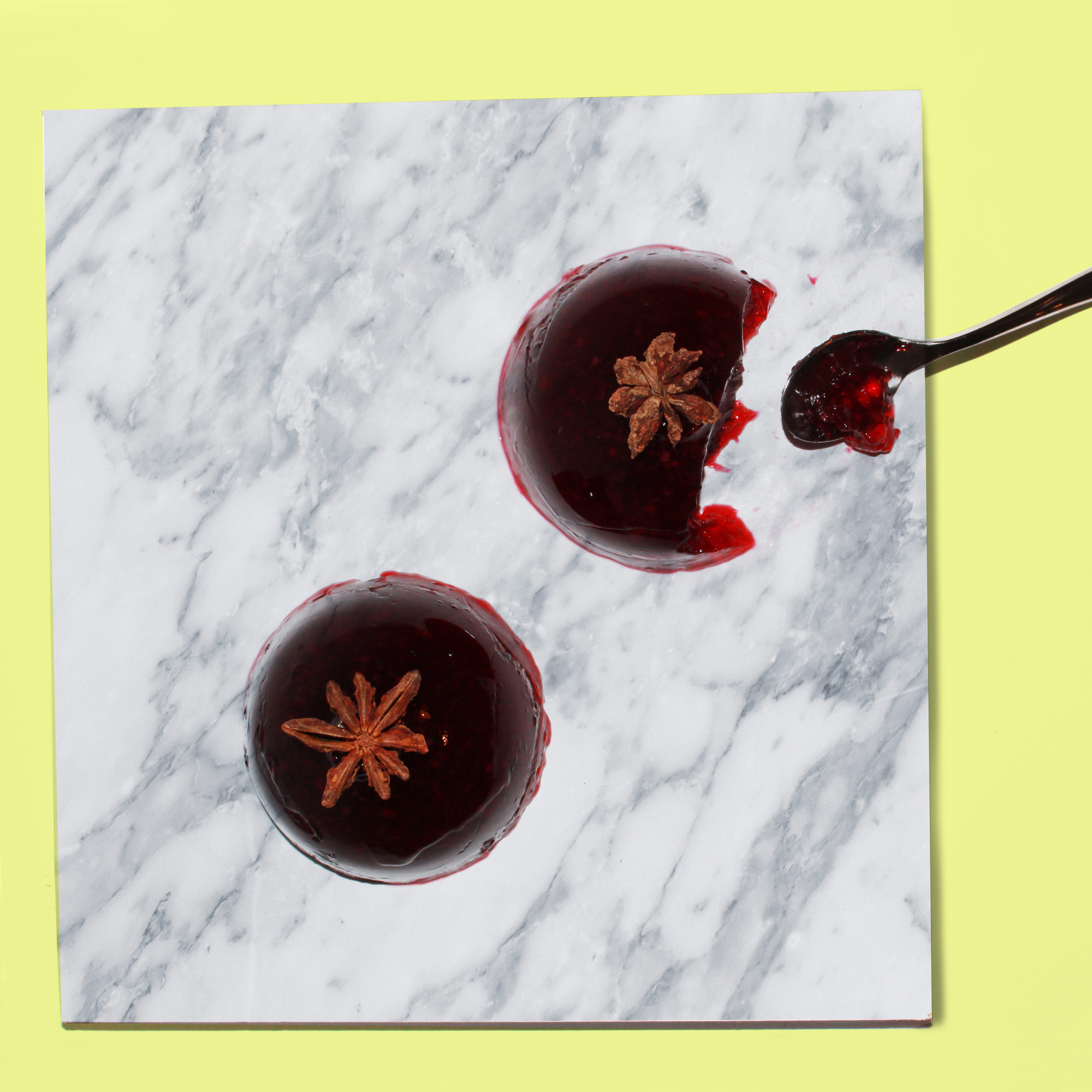
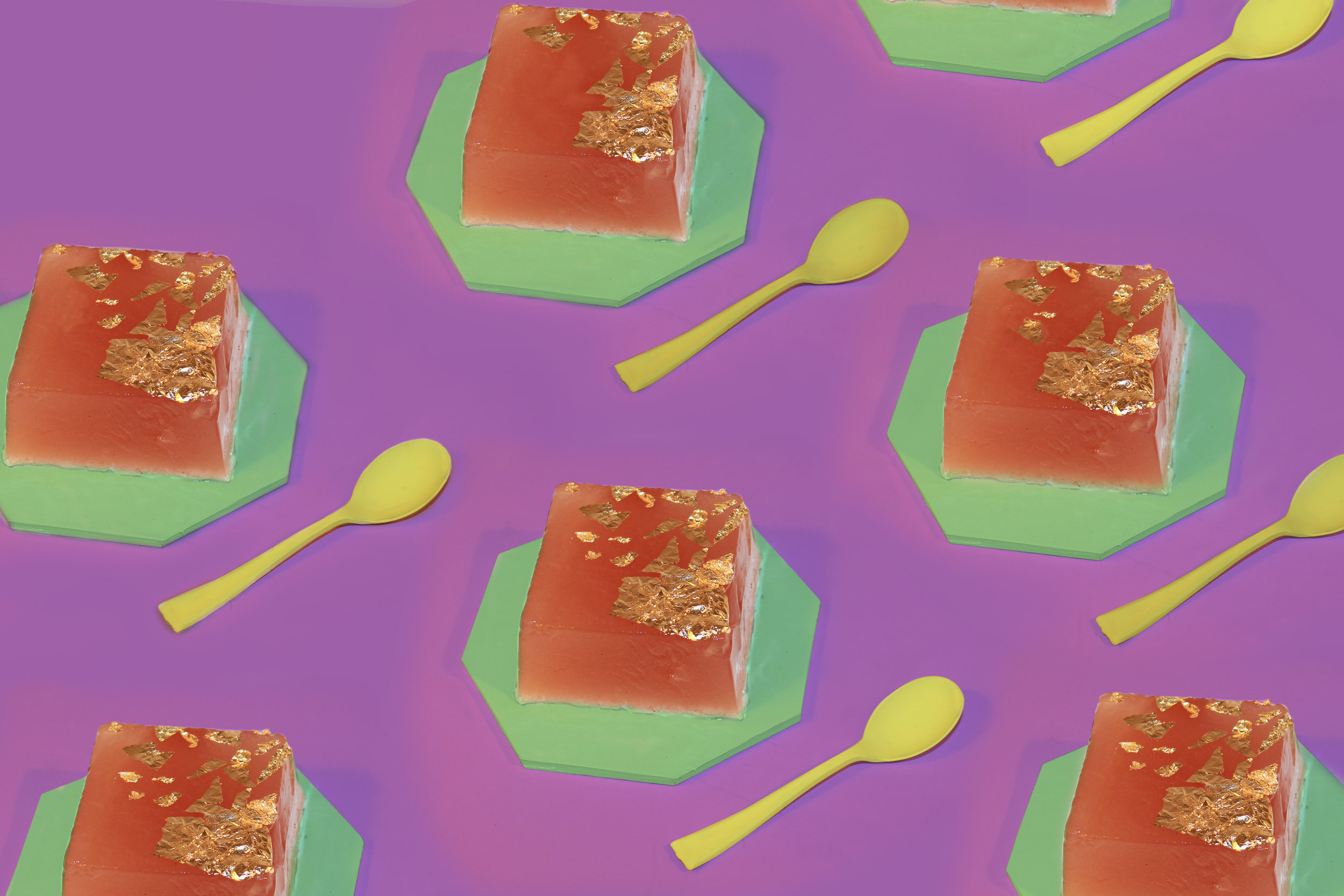
“I’ve had to let go of little perfectionist tendencies and accept that this project is as much, if not more so, about the discoveries made along the way—of which there have been many—than it is about the highly curated and crafted image that gets posted each day.” / Jessica Mentis
Sally Yee #100TinyFierceLadies
What made you decide to sign up for the 100-Day Project? I’m an admirer of the 100-Day Project and those who so boldly share their work with the world. I feel fortunate to have a creative job where I’m able to woo clients by drawing what they’re thinking. For work, drawing is a tool used to communicate ideas, concepts, and customer scenarios about a business or a new service experience. It’s definitely fun. However, I’ve been trying out new creative rituals that aren’t work-related: a daily brain drain, an evening dance class, and a morning doodle with my coffee. I used to do these sparingly, and I realized I needed to make some consistent space just for me. For this project, I wanted to say yes and commit to doing something simple with low barriers that could potentially become my daily ritual. I also wanted to become better at sharing my work with people.
What inspired your project? Growing up, I was fiercely independent, but painstakingly shy with a soft voice. During my teenage years, my closest friends were guys because I thought they involved less drama. I never felt like part of a sisterhood. It was only recently, right around the time I quit my job and headed to graduate school to get my MBA in Design Strategy at the California College of Arts, that I found the ability to be vulnerable and speak up. For my thesis, I did a project in Bayview-Hunters Point about empowering women entrepreneurs. The project was deeply meaningful and has shaped my core values ever since. I dream about doing an inclusive photography portrait series of women someday. I’ve also been doing a project redesigning the sex education experience for youth of color, as well as being a sounding board for my talented friend, Stephanie Cianco, who is starting a club that nurtures all aspects of women’s needs.
Through those projects, thoughts of woman’s body parts, faces, and narratives came to mind. I shared my ideas with my friend, Madelin Woods, who created 100 Nicolas Cage illustrations last year. She gave me a pro tip, which was to choose something that was easily transportable that I could do anywhere at any time. That is how the #100TinyFierceLadies project came to be—a blend of my personal experiences, work, and seeing the incredible need for women to uplift each other.
What have you learned about your creative process since starting this project? First, it’s about making a drawing feel fun without worrying about whether or not it sucks—and even if I think it sucks, I should share it anyway! Second, I’ve been surprised at how much it’s been helping me tap into my creative flow faster than other things I’ve done in the past. Perhaps the cadence of the process works for me? Some days I’ll spend 10 minutes on a drawing, and other days I’ll spend 2 hours if I’m feeling it. It is a little creative energy boost that sets the tone for the other things I’m doing that day. I keep a few four-by-three cards in my notebook and will draw if I see someone with an interesting hairstyle or if I’m feeling irritable during my commute.
Is there anything else you want to say about your experience with the 100-Day Project thus far? Elle Luna is a force! I am deeply inspired and appreciative of how she shows up with her must. I’m also filled with love and gratitude for the Instagram community, which has been so gracious in following along, sharing positive vibes, and celebrating all the small wins day by day. I have seen my friends stretch their creative muscles and have been exposed to so many new artists, especially the work of the goddess of blue, Emma Rae of #100daysofscribblinginblue. I’m eager to see all 100 of my tiny, fierce ladies hanging out together, and I’m excited to observe how my illustration skills evolve as I continue to meet other beautiful beings who are sharing their 100-day projects.
Katrina McHugh #100DaysofLyricalNaturalSciences
What made you decide to sign up for the 100-Day Project? The little “Want to Play?” piece by Elle Luna is what initially snagged me. I saw it and immediately thought, “Hell yes I do!” I am creatively engaged daily with client work at our design studio, Flight Design Co, but it has been an ongoing battle to carve out time for pure, straight-up play. After starting our design and strategy studio in 2013, I spent the next year in overdrive as we brought the business to life. Once we reached a decent cruising speed, I remember looking up and thinking, “Where am I?” In a past lifetime, I’d had a million little ongoing projects and sketchbooks, but they’d all gone cold on the back-burner. I was ready to shake things up. The 100-Day Project sounded like a fun diversion and a perfect way to hold myself to a little bit of daily creative muscle-flexing.
What inspired your project? My personal work has always leaned heavily on the natural sciences for inspiration. When I inherited a set of vintage encyclopedias from my grandpa a few years ago, I got hooked on diagrams and scientific illustrations. I’d open up to a page at random and try to draw something, and it felt like play. The goal was fun. But just making infographics could eventually get a little boring—I mean, 100 days is no joke. Thinking hard about the most fun part of my day usually brought me to something that involved music: taking a walk with headphones, having a friend share something I’d never heard, secretly chair-dancing to something unwholesome while working on a client project, that sort of thing. Trying to squeeze in as much fun as I could, I decided to layer song lyrics on top of natural sciences on top of diagrams, and the project was born.
What have you learned about your creative process since starting this project? The 100-Day Project has taught me that sometimes making something for no reason at all is the best reason ever. The act of sharing daily posts without much time to edit or overthink has completely refreshed my creative process. When stuck in a rut, I tend to work in circles on a project and never share it. Catapulting these little song diagrams out into the world after just 30 minutes of work has been a major challenge, but also a game-changer. Having them met with enthusiasm from my friends and family seems to have sent my brain a message that says, “See? It’s okay to simmer down, do something fun, and move on.”
Creatively, the posts build confidence and keep my design muscles strong so it’s no big surprise that the benefits of the 100-Day Project have spilled over into my client work, making that feeling easier as well.
Is there anything else you want to say about your experience with the 100-Day Project thus far? My favorite part has been the community. Old friends I haven’t talked to in years are sending me songs, and I’ve made some fun new international Instagram friends working on their own 100-day projects. A few people have told me that they eagerly await seeing what the graphic of the day will be. Knowing that at least a tiny handful of folks out there are waiting for me to post something is motivating. When I’m faced with the decision of watching my favorite TV show or setting aside time for a late-night art project, those little nudges from family and friends make all the difference.
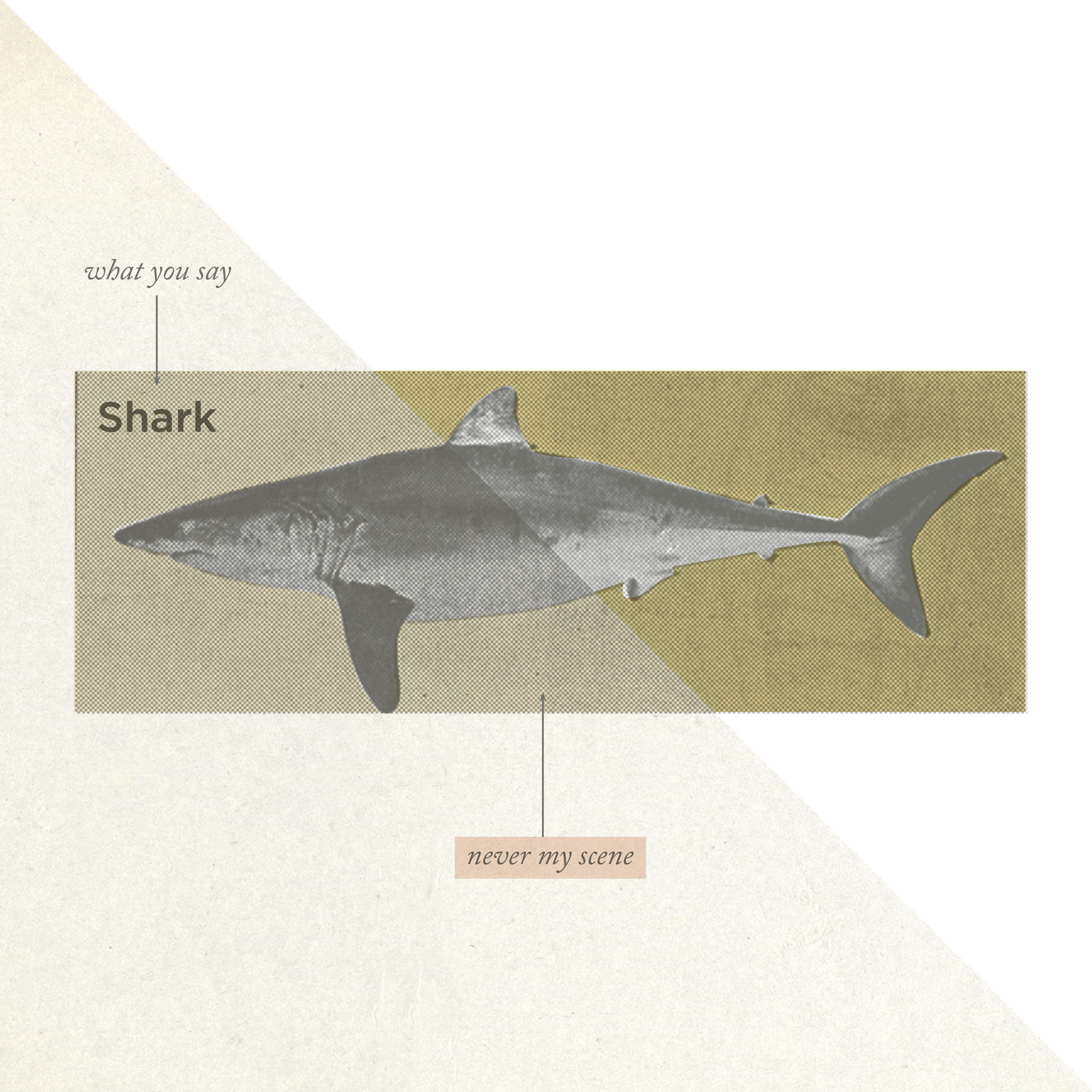
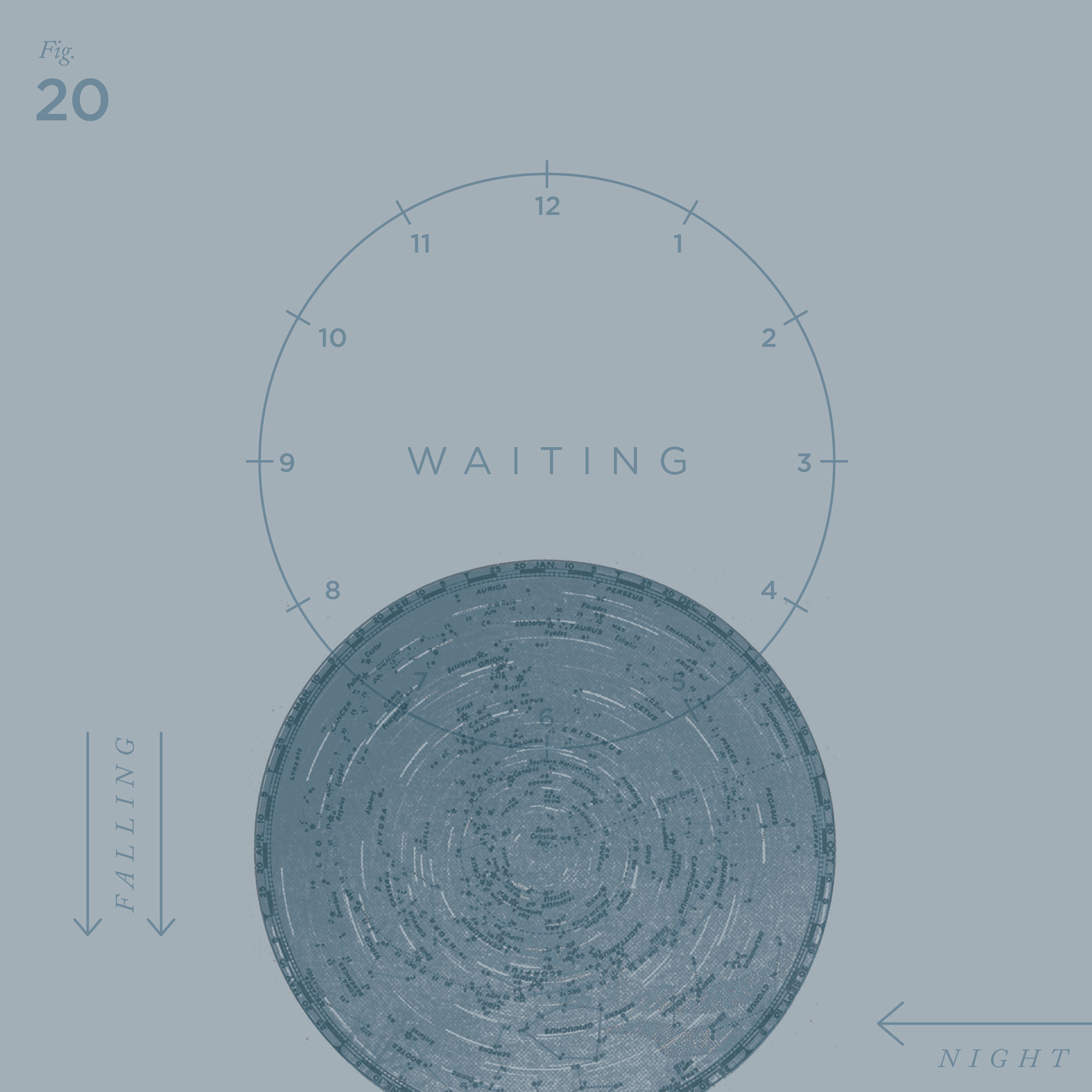
“The 100-Day Project has taught me that sometimes making something for no reason at all is the best reason ever. The act of sharing daily posts without much time to edit or overthink has completely refreshed my creative process.” / Katrina McHugh
Kian Lavi #100DaysofBus
What made you decide to sign up for the 100-Day Project? In short, Michael Bierut. All kinds of weekly, monthly, or yearly challenges pop up almost every day among the photography community, and I’ve never taken much of an interest in them. I actually stumbled upon the 100-Day Project after reading about designer Rick Wolff creating the “Hillary Bold” typeface. For some reason, 100 days sounded short enough that it wouldn’t be much of a challenge, and I fell in love with the premise. What could I do with 100 days of making? I had been in a creative rut due to being overwhelmed with real-world work, so it gave me a good excuse to fall back into photography.
What inspired your project? After sitting on a bus every day for 30 to 40 minutes, boredom naturally sets in. People start forgetting there’s a swarm of other people sitting around them and they pass the time on their phones. They idly read Facebook and forget whatever they read about by the time they get to work or school. I became one of these people, listless and bored. So I figured, “Why not use this time to engage with everyone around me?” People end up being most of what I photograph anyway, so why not use that time to do something interesting? I wanted to strike up a conversation with someone and give them my full attention for 30 minutes.
What have you learned about your creative process since starting this project? This project has made me remember how nice it is to have a habit. My creative process usually ends at editing: photos will sit on my computer for months or years before I remember to go back to them. But forcing myself to do something every day in specific ways is cathartic. It’s like forcing myself to re-read my diary and learn something new every day.
Is there anything else you want to say about your experience with the 100-Day Project thus far? I just want to say thank you. Photography is a really important part of how I interpret my world. I moved back to San Francisco a few months ago and haven’t had a moment to document the world around me—or so I thought. This project has inspired me in a lot of ways, and I feel such a rush when I’m able to make a stranger smile from the simple act of taking their photograph. I’ve had people recognize me in the streets, or remember that I took their photograph the week prior. There’s so much joy in it, and a lot of it is inherent in the project itself. So, thank you.
Marielle Hare #100DaysofVididitties
What made you decide to sign up for the 100-Day Project? I navigate life by a physical listening, a form of intuition that waits for a resonant yes. I saw an announcement for the 100-Day Project on Facebook and it resonated with me so much that I instantly made a commitment to the project.
About a year ago, I started making little videos and sending them to a friend. The way she devoured them and pleaded for more awakened something in me. I was inspired to investigate this form further. Committing to making vididitties—video ditties—inspired equal parts excitement and fear. This project was clearly my must.
What inspired your project? My vididitties combine two of my long-time loves: movement improvisation and photography. Marrying these two passions has brought me a wellspring of creative expression. The setting for most of these works is the privacy and intimacy of my own backyard: I am endlessly enchanted by the soft and luscious southern landscape, and I am entranced by the palpable sensuality of light. I am fascinated with putting the texture of feeling into light and motion. The content of my work is informed by the archetypal pulse, the complexities of the human condition, and the thrill and mystery of love. Whether behind the camera or in front of it, I become a kindly trickster, at once vulnerable and powerful. I’m able to be someone other than, and bigger than, myself.
What have you learned about your creative process since starting this project? I’ve learned that I am not only a relational person, but I am also a performer who needs to connect with and give to an audience.
Though Instagram is an unconventional way to experience performance, it nonetheless offers the intimacy of community and connection. I am delighted to find the essential relationship of performer and audience there. Without this audience, I would not be creating these pieces.
I have found that my creative process is completely informed by the 15-second Instagram format. I have long embraced the graceful brevity of haiku in creative practice, so the über-short vididitty has become its own genre for me. I think I’m only at the tip of the iceberg with what can be expressed in 15 seconds. The challenge excites me.
Is there anything else you want to say about your experience with the 100-Day Project thus far? Doing this project in a public forum has been remarkable. Because these vididitties are me at my core, I initially felt vulnerable sharing them on social media. However, the responses have surprised and thrilled me every time. Every day, I am creating my own language—I am tapping into my most essential self—and it turns out that there are people who understand it. I am letting people in. And in so doing, I am finding my people; we are finding each other. I know this is how the world works, but every time I experience it, it feels like pure magic. I have finally found the door that I have been feeling around for in the dark for a very long time. The door is open and the light is streaming in.
“I am letting people in. And in so doing, I am finding my people; we are finding each other. I know this is how the world works, but every time I experience it, it feels like pure magic…The door is open and the light is streaming in.” / Marielle Hare
About the 100-Day Project
The 100-Day Project is a collaboration between artist, designer, and writer, Elle Luna, and The Great Discontent. The project, which kicked off on April 6, 2015, is a celebration of process that encourages everyone to participate in 100 days of making. It’s not too late to start! Learn more.
